The Taboo-Breaking Erotica of Toshio Saeki
The master of the 1970s Japanese avant-garde reimagined his most iconic artworks for a limited box set with silkscreen artist Fumie Taniyama.
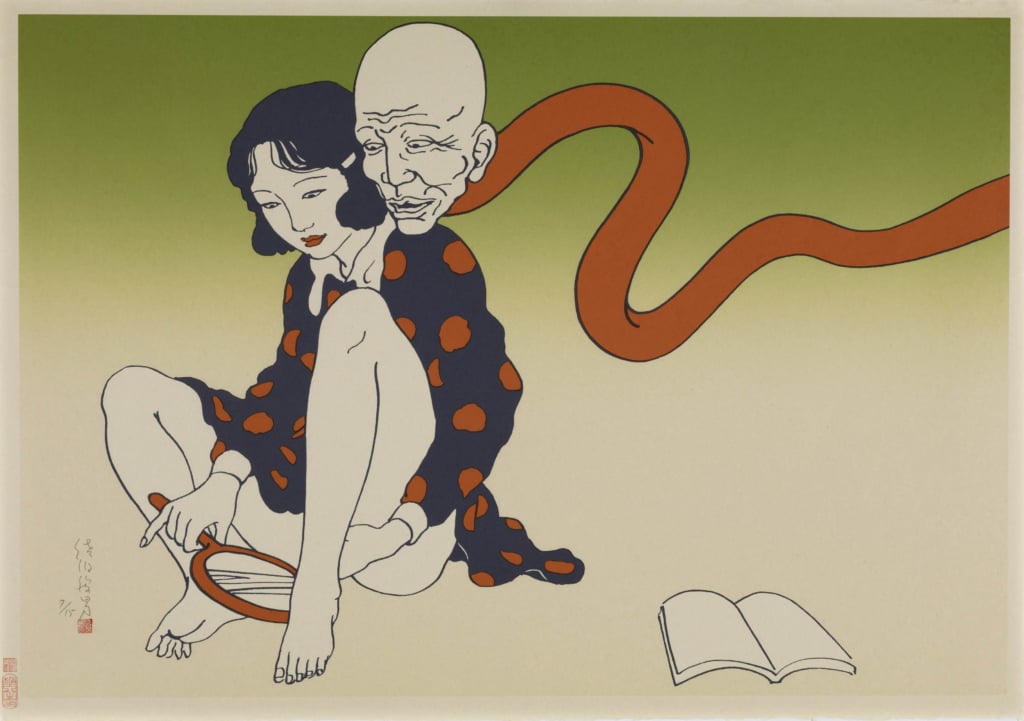
Toshio Saeki, Silkscreen on mulberry tree paper (washi shin-kozo-shi), handmade by Fumie Taniyama
Inspired by Samurai-period dramas, Shinto spirits, and Japanese folklore, Toshio Saeki flaunted a number of staunch taboos with his sexually explicit erotica that took the form of paintings and illustrations. His work has been described as a modern take on the Japanese art of Shunga, which was widely circulated between 1600 and 1900. His works blend gore, sex, and humour and feature courtesans, geisha, yokai, monsters, and spirits. In 2010, Toshio Saeki collaborated with the silkscreen artist Fumie Taniyama for the work Kuro Hozuki. A series of silkscreen prints was created, reimagining a number of Toshio Saeki’s iconic works from the 1970s.
Born in 1945, Japanese artist Toshio Saeki has been dubbed the Godfather of Japanese Erotica. A cult figure of the radical post-war underground scene in Japan, Toshio Saeki came to prominence in the 1970s along with the nation-wide social revolution. His work first appeared in the magazine Heibon Punch after numerous rejections, and he would go on notably to create the cover art for the album Some Time in New York City by John Lennon and Yoko Ono in 1972, following his first exhibition in 1970.
Clear lines and dark intentions
Toshio Saeki and Fumie Taniyama’s collaboration saw a series of silkscreen prints created for a limited edition box set released by Gallery Da-End. Printed onto mulberry tree paper (washi shin-kozo-shi) handmade by Fumie Taniyama, the images are lewd and lustful: a disembodied head floats with a foetus, a geisha trailing behind with a large net; a small red spirit conjures wind that lifts the skirt of a young girl.
The dreamlike images attest to Toshio Saeki’s ambition to explore the deepest realms of the unconscious, characterised by what critic David Rosenberg has called clear lines and dark intentions. However, Toshio Saeki’s work wasn’t all about erotica; in 1991 he published Tricks for Kids, Fukuinkan Shoten, one of three children’s books produced by the artist during his lifetime.
Kuro Hozuki (2010), a limited-edition box set with silkscreen prints of Toshio Saeki’s work handmade by Fumie Taniyama was released by Gallery Da-End.
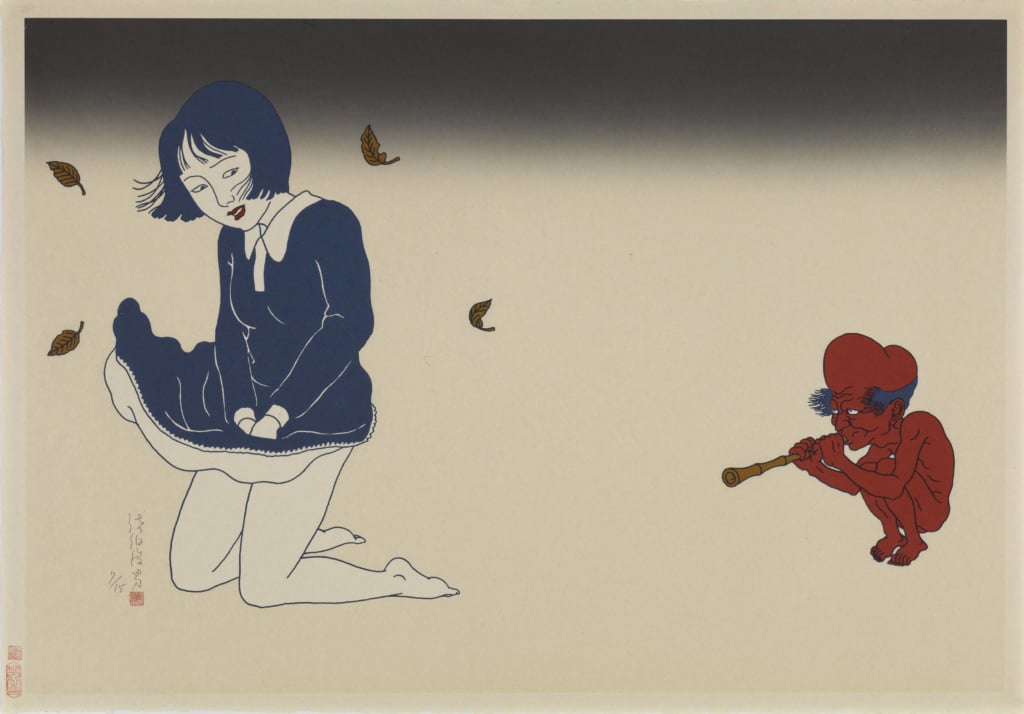
Toshio Saeki, Silkscreen on mulberry tree paper (washi shin-kozo-shi), handmade by Fumie Taniyama
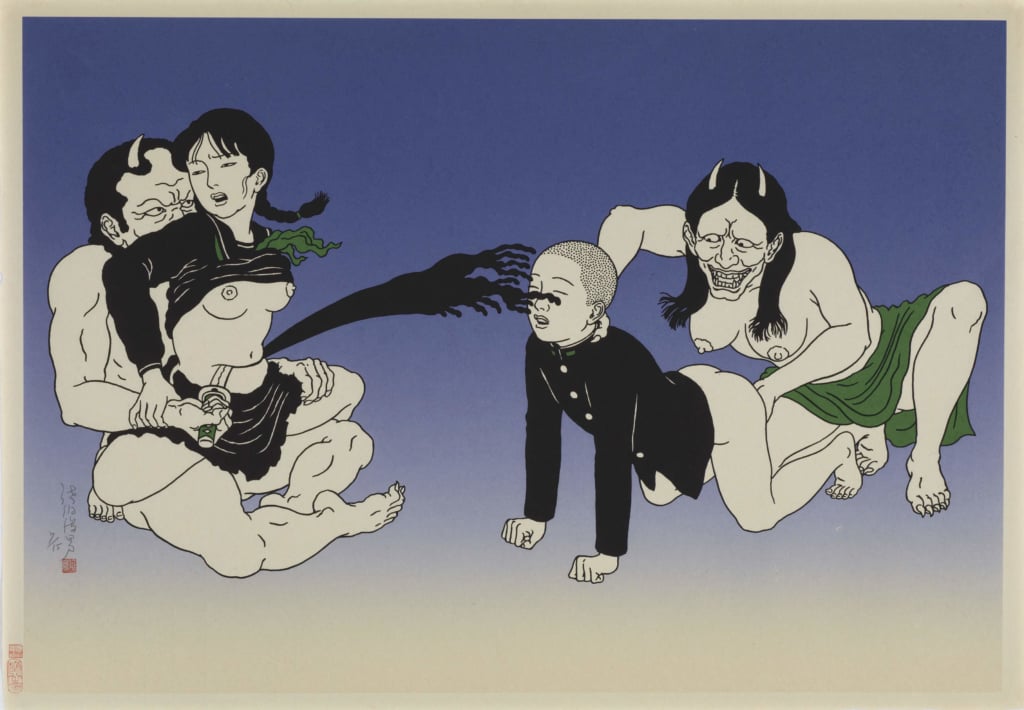
Toshio Saeki, Silkscreen on mulberry tree paper (washi shin-kozo-shi), handmade by Fumie Taniyama
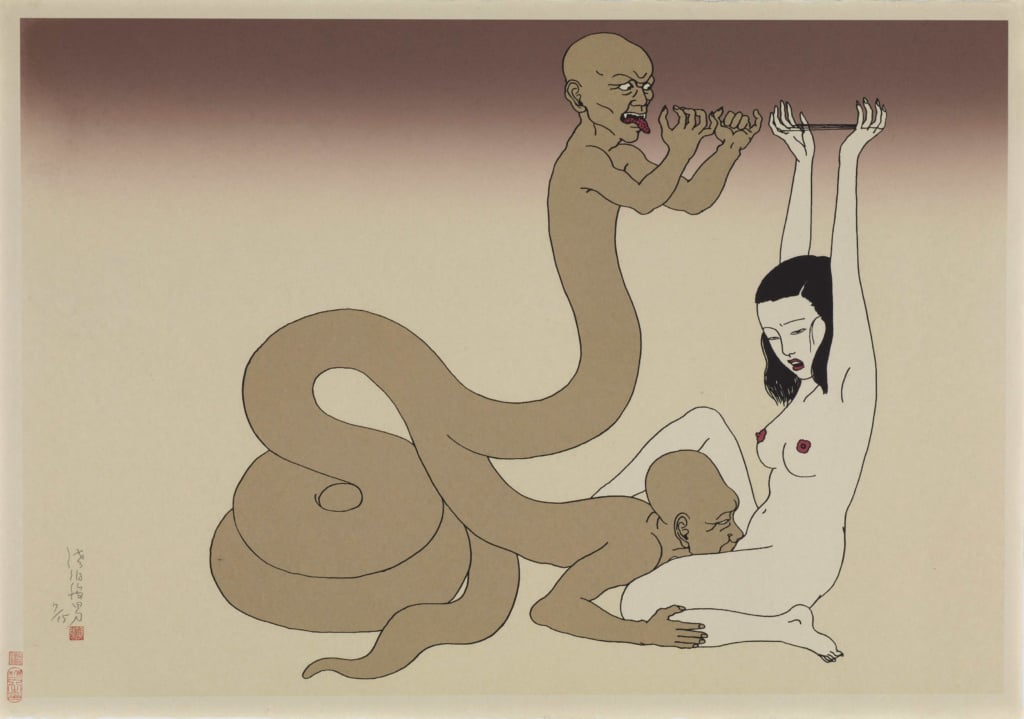
Toshio Saeki, Silkscreen on mulberry tree paper (washi shin-kozo-shi), handmade by Fumie Taniyama
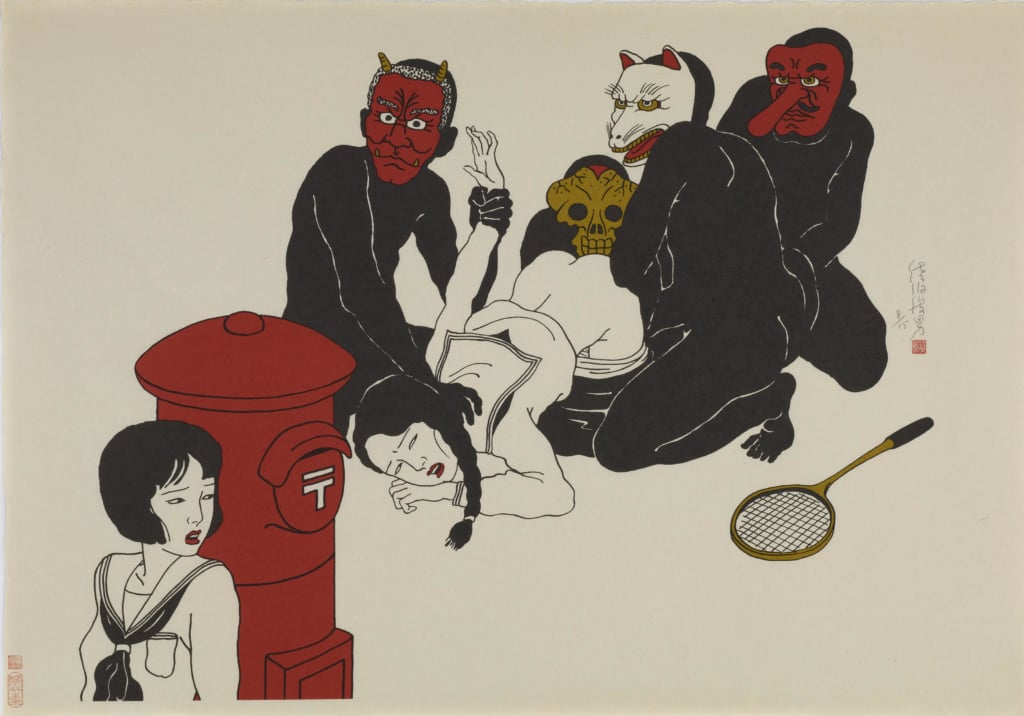
Toshio Saeki, Silkscreen on mulberry tree paper (washi shin-kozo-shi), handmade by Fumie Taniyama
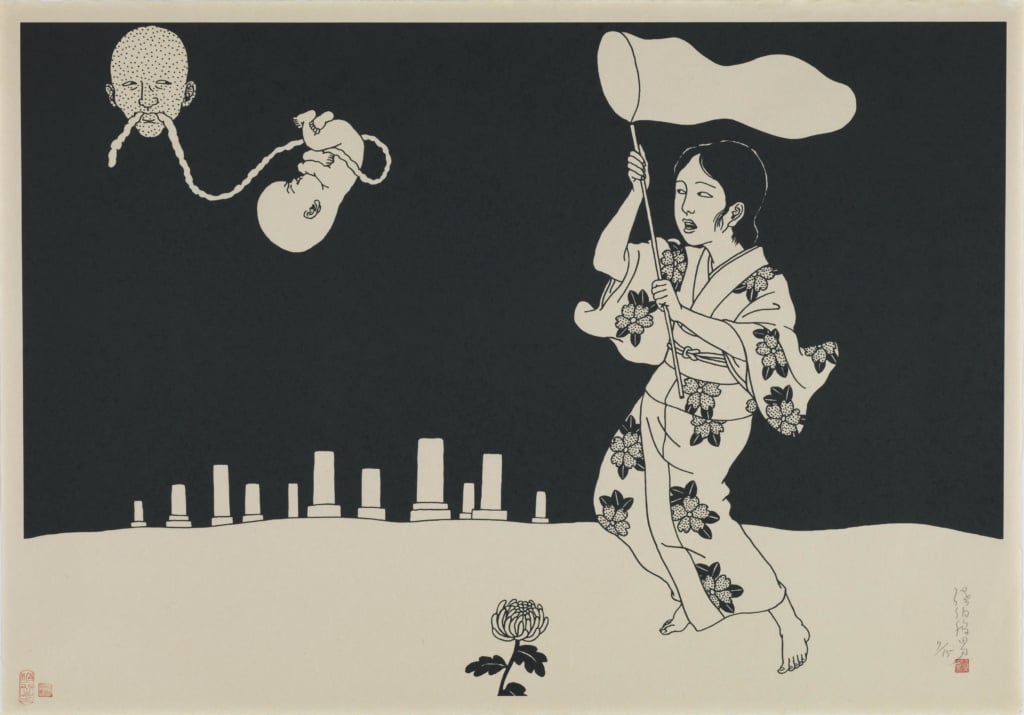
Toshio Saeki, Silkscreen on mulberry tree paper (washi shin-kozo-shi), handmade by Fumie Taniyama
TRENDING
-
A House from the Taisho Era Reveals Its Secrets
While visiting an abandoned building, Hamish Campbell discovered photographs the owner had taken of the place in the 1920s.

-
The Taboo-Breaking Erotica of Toshio Saeki
The master of the 1970s Japanese avant-garde reimagined his most iconic artworks for a limited box set with silkscreen artist Fumie Taniyama.

-
With Meisa Fujishiro, Tokyo's Nudes Stand Tall
In the series 'Sketches of Tokyo', the photographer revisits the genre by bringing it face to face with the capital's architecture.

-
Masahisa Fukase's Family Portraits
In his series ‘Family’, the photographer compiles surprising photos in which he questions death, the inescapable.

-
Hajime Sorayama's Futuristic Eroticism
The illustrator is the pioneer for a form of hyperrealism that combines sensuality and technology and depicts sexualised robots.





